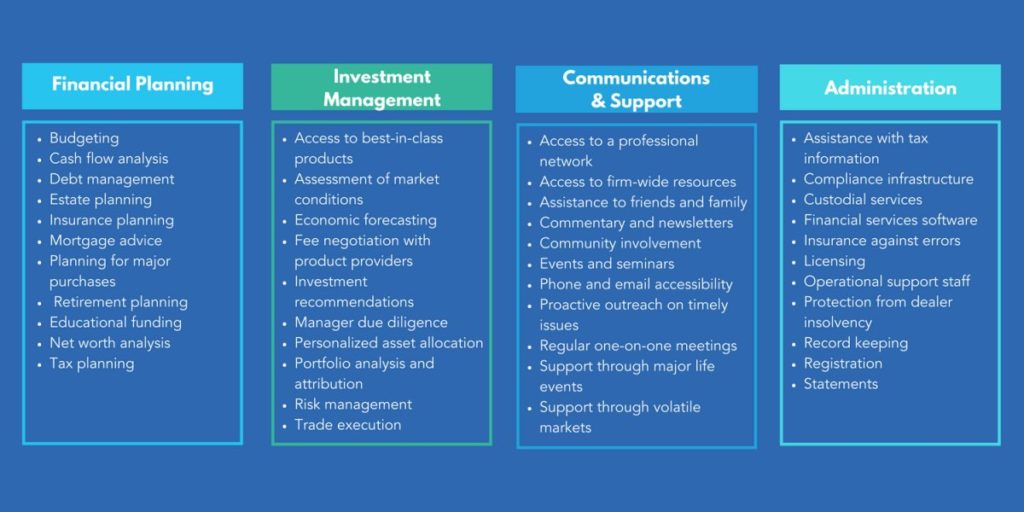
Making sure you’re getting your money’s worth is important, especially when it comes to the fees you pay to make your money work for you. There is no one-size-fits-all answer for how much you should pay your financial advisor in fees. It depends on what type of services you’re receiving and how much value you receive. Just focusing on the dollar amount of the fees is irrelevant in the absence of understanding the value you’re getting.
For example, if you’re buying a new car and make a decision based on price alone, you might not be happy with your purchase in the long run. You will likely have preferences for features like leather seats, GPS systems and horsepower and are willing to pay more for those things. If you only care about getting from point A to point B the cheapest way possible, you might ride your bike or take the city bus. The choice is yours but there is a considerable difference in both cost and experience.
A good first question to ask yourself before interviewing your advisor is “what am I looking for in an advisor?” Do you want someone to manage your investments or do you also want a comprehensive financial plan to help you best manage your cash flow, understand potential financial risks you face and set up strategies to achieve your life goals? As simple as it sounds, part of finding the right advisor is making sure that they can provide you with the support, guidance and services you are looking for at a fair price. Here are some ideas of services you can expect from a financial advisor:

Next, confirm you’re both on the same page about how the advisor is being paid. You can ask this question outright or frame it in a way where you get additional information; “what are your fees and what is included in that? What is extra?”
In a commission-based account, the advisor gets paid based on what investments you buy and sell. This may be suitable for buy and hold type portfolios. In a fee-based account, the advisor gets paid based on a percentage of the value of your investments. This type of account generally better aligns the investor and the advisor and often includes higher service levels and additional benefits. These can range from an average of one to three percent of the value of your portfolio. Typically, the larger your portfolio, the lower you’re the percentage of the fee you will be charged.
Lastly, have a discussion about the return you expect to get and your risk-tolerance levels to ensure you get the right financial value and performance for what you are paying in fees. Having open expectations about this will help your advisor make decisions that benefit you the most. Here are some questions you can ask to start this discussion: